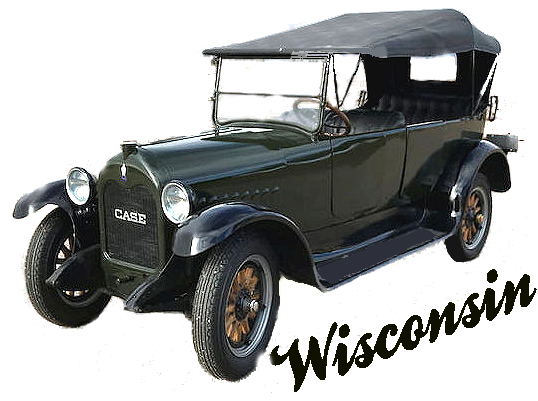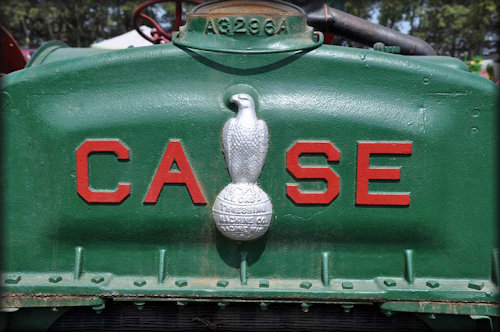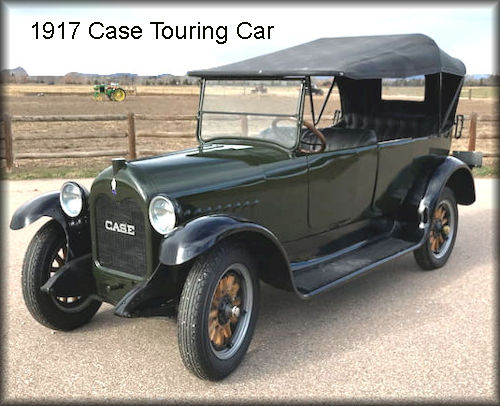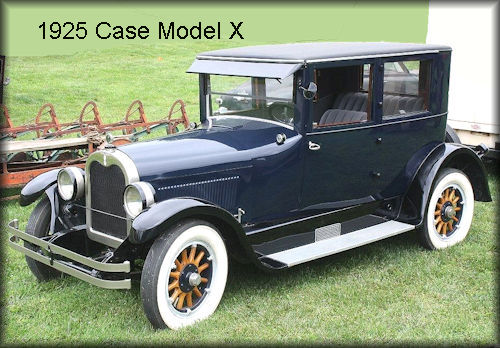


Mobile users:
For best results, view in Landscape mode.
The Case Company:
The Racine Threshing Machine
Works was established by
Jerome Increase Case
(1819–1891)
in Racine, Wi., in 1842.
By 1863, Case and 3 partners operated
J.I. Case and Company, but in 1880,
the partnership dissolved and the
J.I. Case Threshing Machine
Company, Inc. was formed.
In 1886, it was the world’s largest
producer of steam engines.
J. I. Case introduced an eagle logo
for the first time in 1865 based
on Old Abe, a Wisconsin Civil War
Regiment's mascot.

Throughout the Civil War, Old Abe
went through 38 battles and the
Eighth Regiment became known
as the Eagle Regiment.
Old Abe reigned for 104 years as
the J. I. Case Company trademark.
Case constructed his first portable
steam engine in 1869, an engine used
to power wheat threshers.
That engine is in the Smithsonian
Museum in Washington, D.C.
Case won first place at the 1878 Paris
Exposition in France for his thresher.
It is was then that Case created his
first self-propelled traction engine,
with a drive mechanism on one of
his portable engines.
By 1895, the Case Company had
begun to produce gasoline engines.
In 1910, Case purchased the
Pierce-Racine automobile company.
In 1911, production began on an
essentially relaunched four-cylinder
car.

Engines remained essentially unchanged
until six-cylinder Continental engines
of approximately 30 hp were
obtained from 1918 to 1927.
Though annual car sales hovered
in the 2,000 range for several years,
and peaked at just over 2,600 for 1915,
the vehicles never really got huge
attention of the car-buyers.
Case automobiles came in Touring
models, Sedans, Coupes, and a few
sporting types of a luxury class.
Case Company renamed the Automobile
"Case" and utilized the company's
8,000 dealers and agents world
wide to sell the new line.
The Case Motor Works displayed
a strong tendency to make what
amounted to custom jobs.
If a customer like the car, but objected
to the color of the upholstery, the
obliging Case men would tear it out
and replace it with whatever the
buyer wanted.
Price was also an issue, with Case
models offered from $1,250 to $2,500
at the time when a new Ford Model T
only costed around $300 and decreasing
steadily as the years progressed.
Case continued to build automobiles
until 1927.

In total, Case produced 27,000
cars in its 16-year run.
In 1969, J. I. Case introduced a new
series of agricultural tractors
naming it the "Agri - King" line.
In 1983, during purchase of
International Harvester assets,
Case sold its garden tractor division
to Ingersoll Power Equipment.
Ingersoll tractors would continue to
carry the Case brand name until
1987.
In 1984, Case parent Tenneco bought
selected assets of the International
Harvester agriculture division and
merged it with J. I. Case.
All agriculture products are first labeled
Case International and later Case IH.
In 2006, Case IH came with a plan
to bring back the "International"
feel to their products.
They brought back the old
International Harvester logo, and
made more technical difference
between the two brands.
Case IH is still in existent today,
and is located in Sturtevant, WI
(Racine Co).
Today, there are only about a
100 Case cars left in existence.
